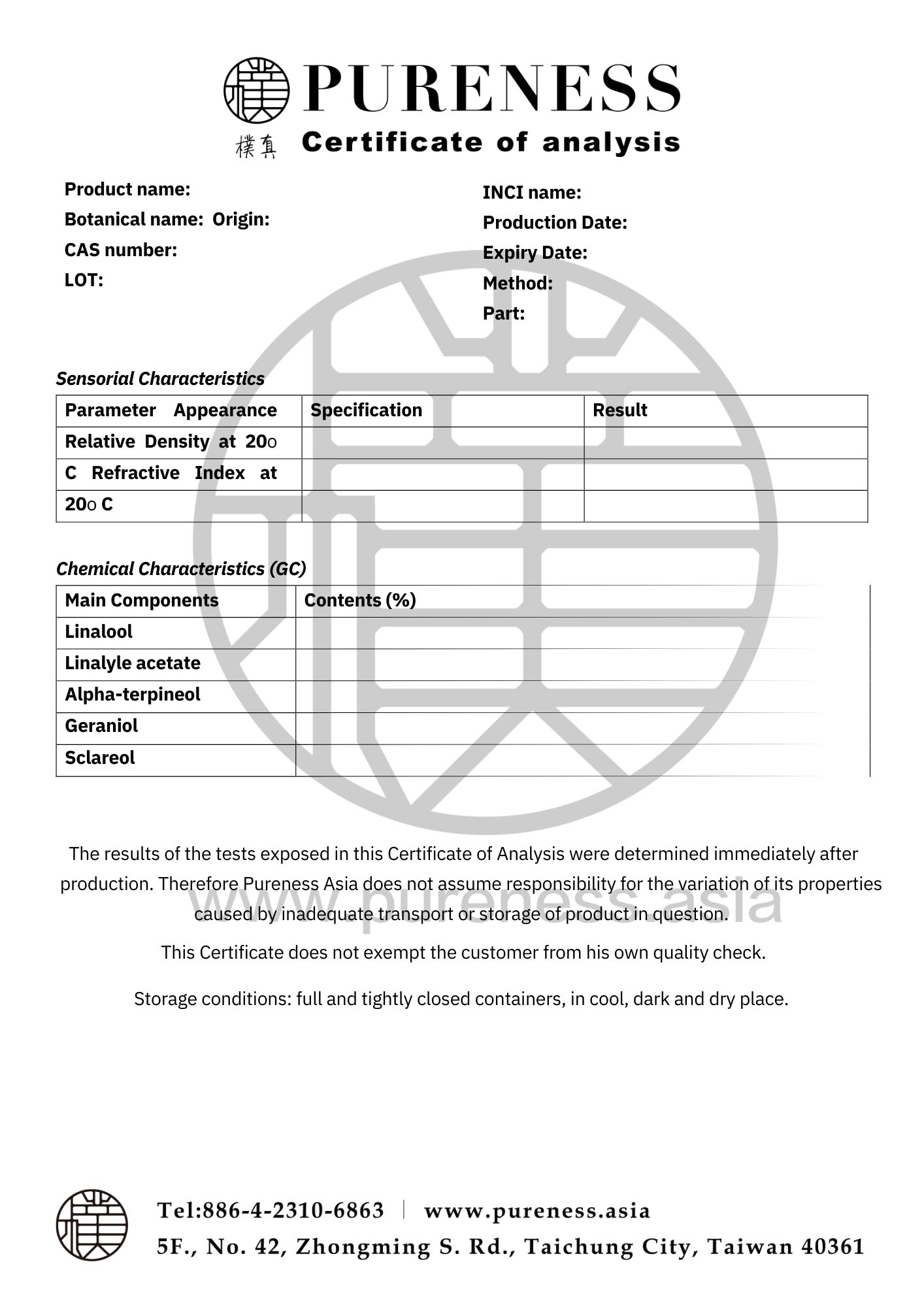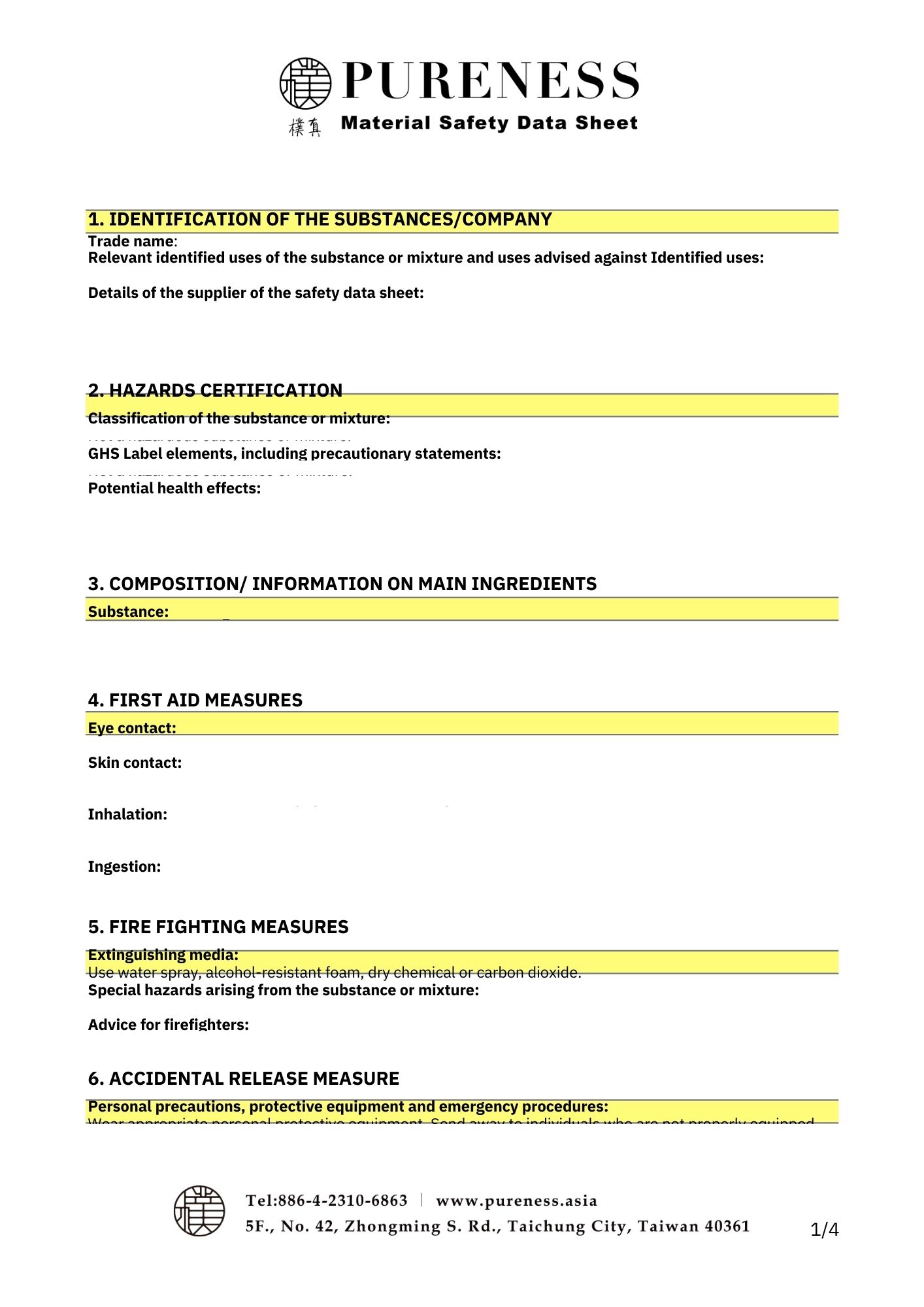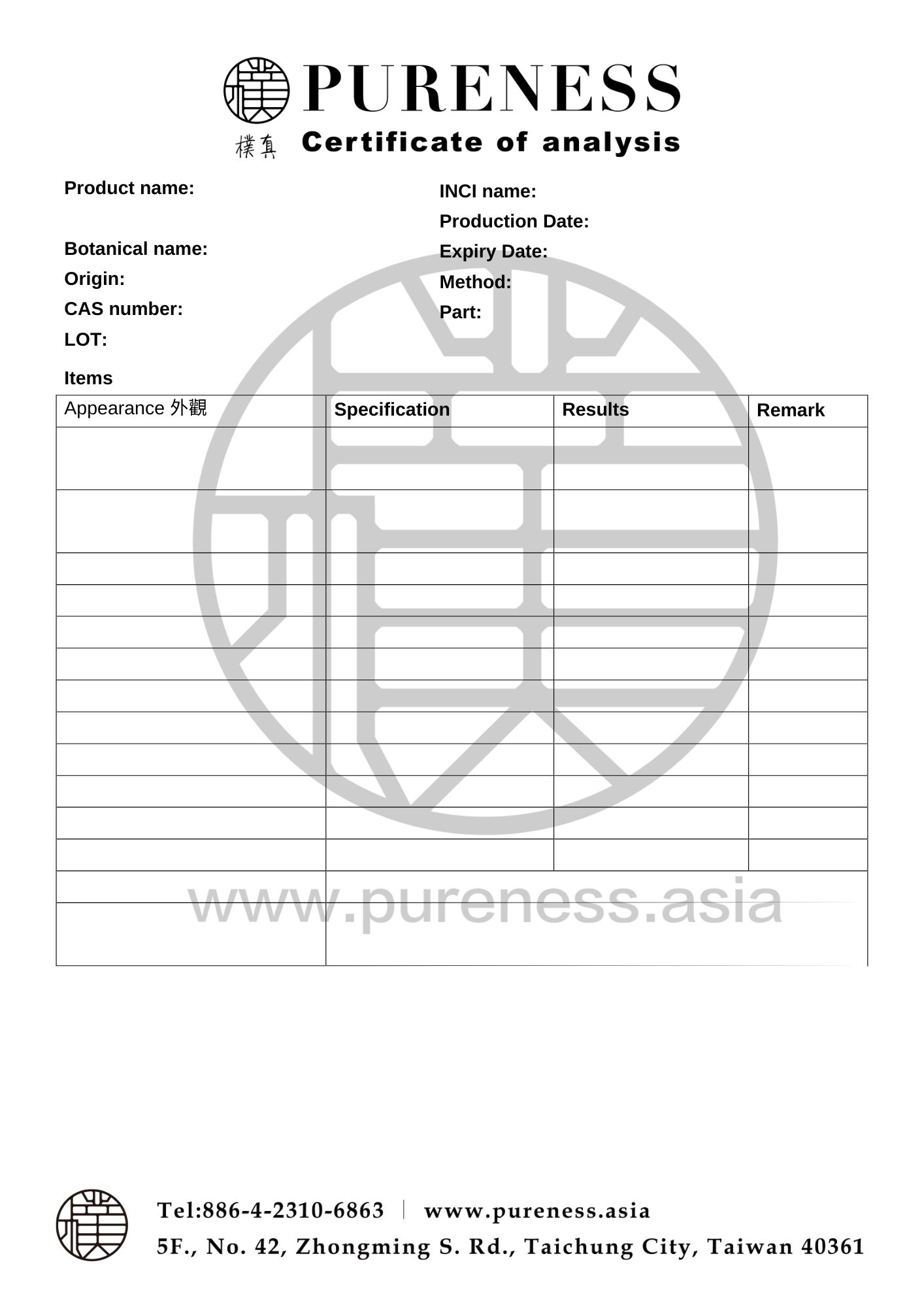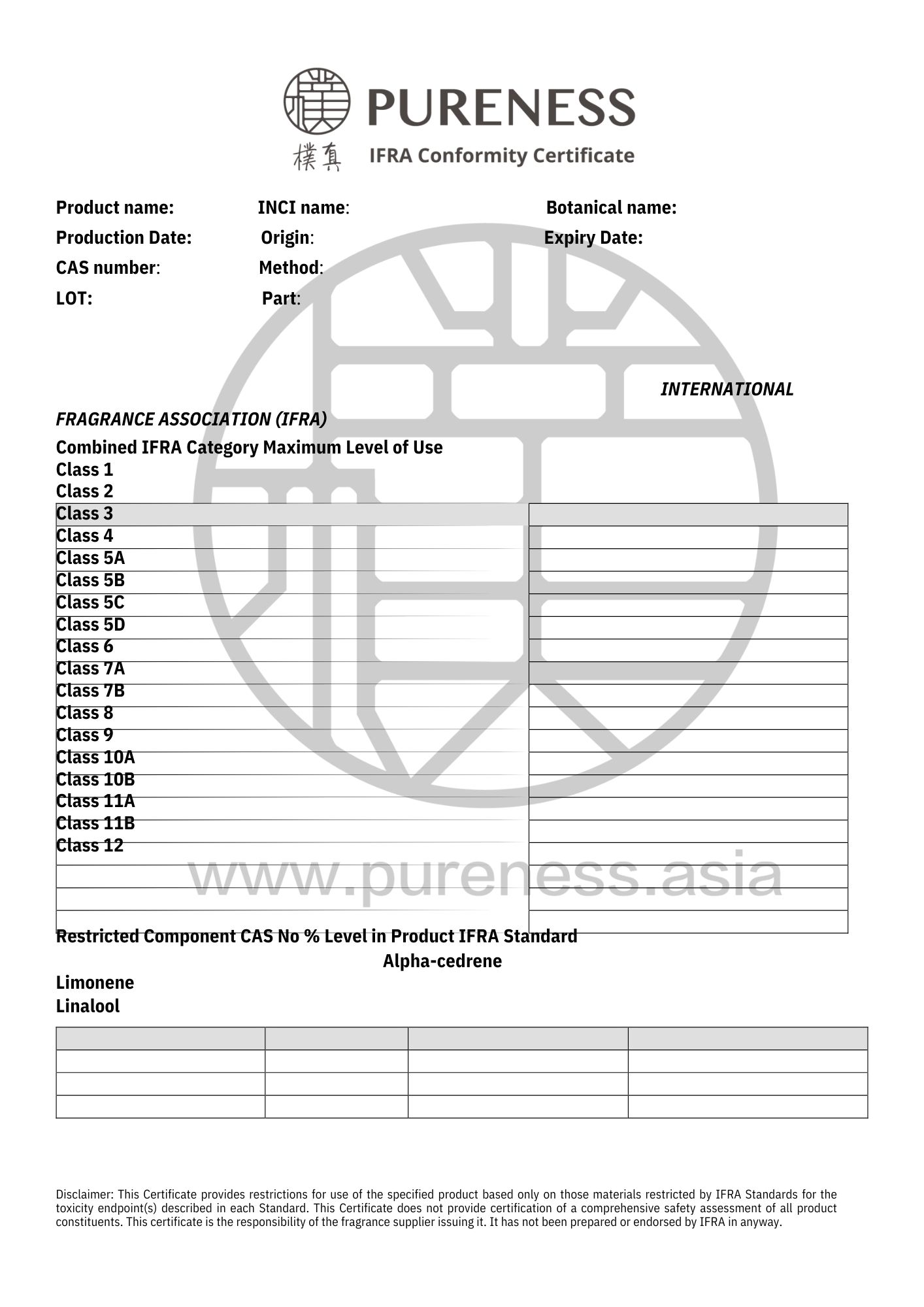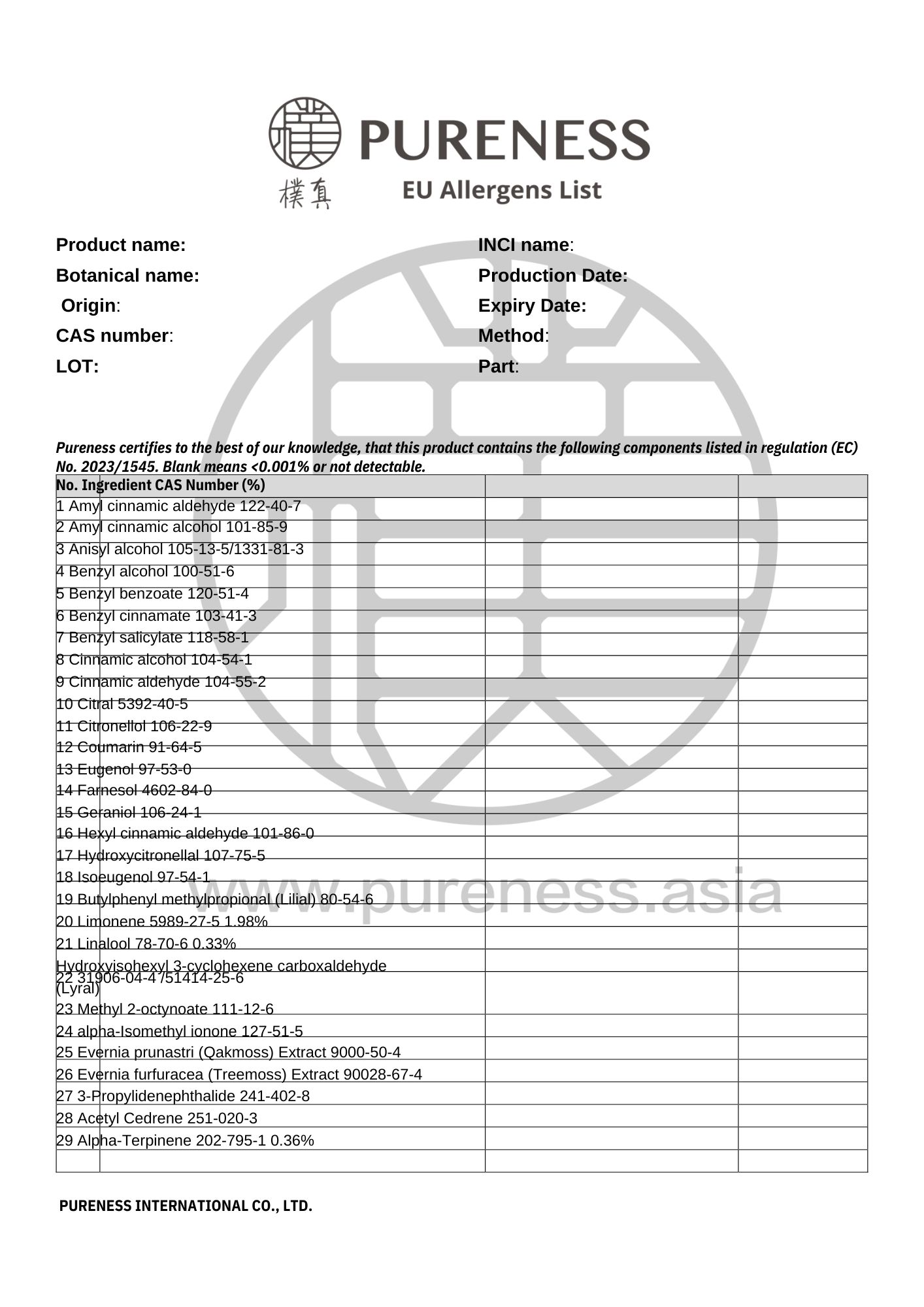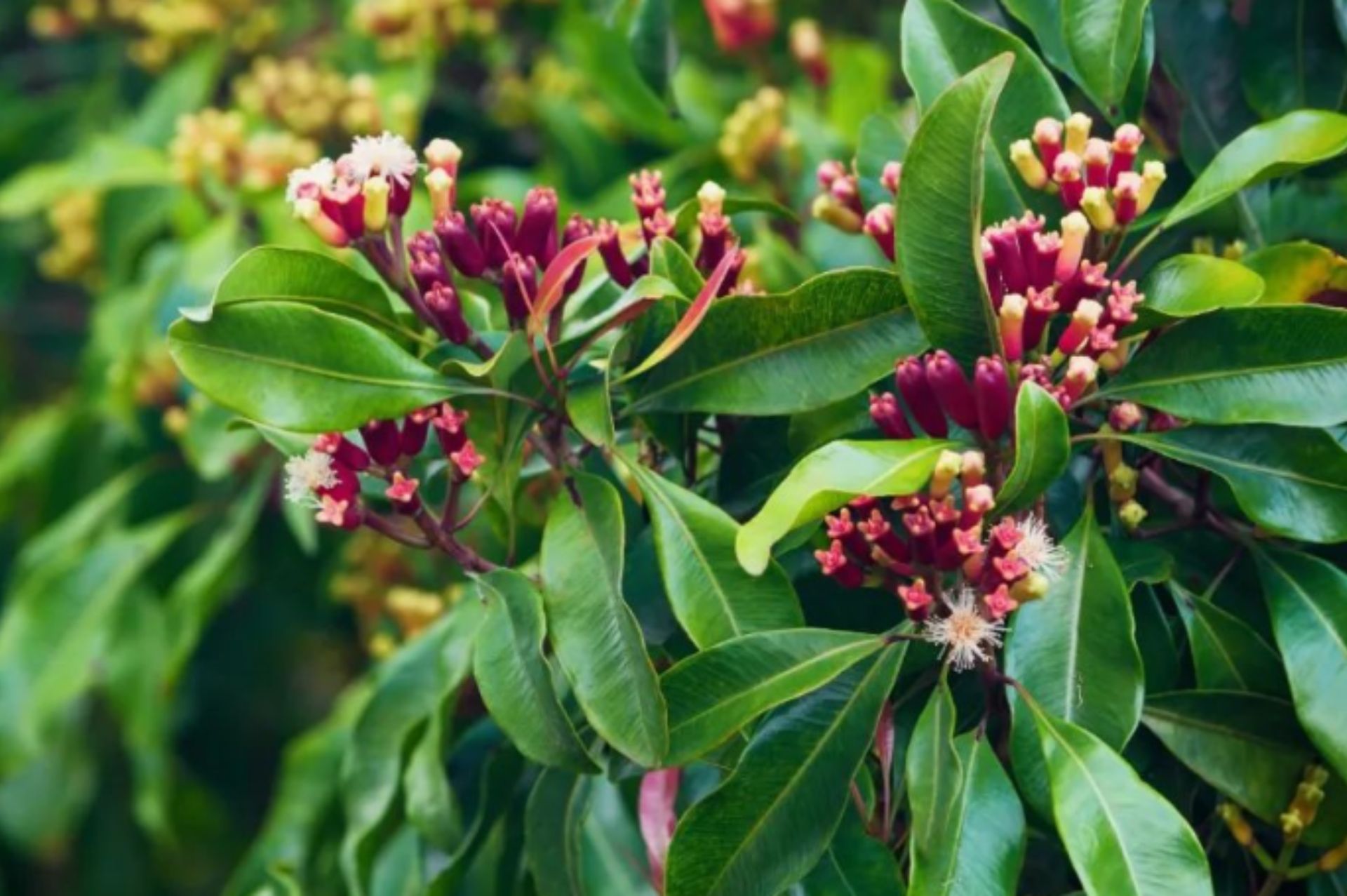
Clove Bud
Scientific name|Eugenia caryophyllata
Origin|Madagascar
Classification|Spice series
Specifications|500g-25kg Please contact sales for details
Extraction part|Bud
Extraction method | Distillation
Plant family|Apiaceae
Aroma|A refreshing herbal aroma to instantly awaken your senses.
▎Essential Oil Introduction
Clove buds (Eugenia caryophyllus), originating from the Moluccas Islands of Indonesia, now grow in Madagascar, the Philippines, and other regions with similar climates, as they are tropical plants. The flower buds, used as raw material, are known as Clou. Due to their needle-like shape, they are also referred to as 'Ding Zi Xiang' in China. Among spices, cloves have strong aroma, they are available as ground cloves or whole dried buds. Adding a small amount to fish dishes can enhance its flavor and depth.
Cloves, with their pyramidal tree shape adorned with vibrant red flower buds, are among the island's most beautiful plants. After drying, the flower buds emit a spicy aroma, with strong adsorption capabilities. As early as 200 BC, during the Western Han Dynasty, there were records of ministers chewing cloves before attending court sessions, to exhale a fragrant breath when conversing with the emperor. Clove bud essential oil is extracted from dried, unopened flower buds on the clove tree. Other oils extracted from leaves and stems contain a high concentration of eugenol, which can cause strong irritation to the skin and mucous membranes, making them unsuitable for aromatherapy.
Its scent and components have properties that reduce bacterial growth and reproduction, as well as insect repellent characteristics. In Southeast Asian countries and during plague outbreaks in Europe, cloves were used to prevent and resist the spread of infectious diseases.
▎Essential Oil Effect
| Effect | Description |
|---|---|
| Physiological | Slowing oxidation, relieve pain, anti inflammation, anti bacteria, prevent abnormal muscle spasms, promote gastrointestinal health, enhance immunity. |
| Psychological | Give strength when facing difficulties and adversity. |
▎Component Analysis
|Main Component:Phenols
Mainly include eugenol, ether syringyl ester, β-caryophyllene, oxides and various other trace components.
|Essential Oil Extraction Parts
| Extraction Parts | Bud | Leaves |
|---|---|---|
| Component | Contains more Acetyleugenol | Contains more Eugenol |
| Aroma | Richer | Pungent |
| Effect | Soft | Intense and direct |
| Price | Higher | Lower |
|Research Validation
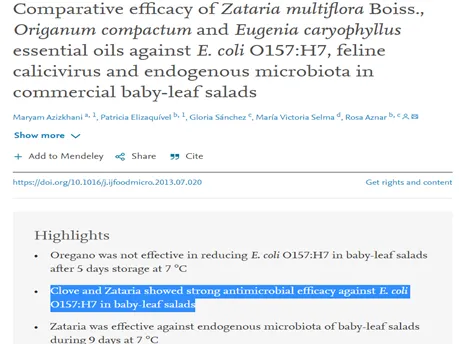
▸ Clove shows a strong effect on reducing the growth and reproduction of Escherichia coli.
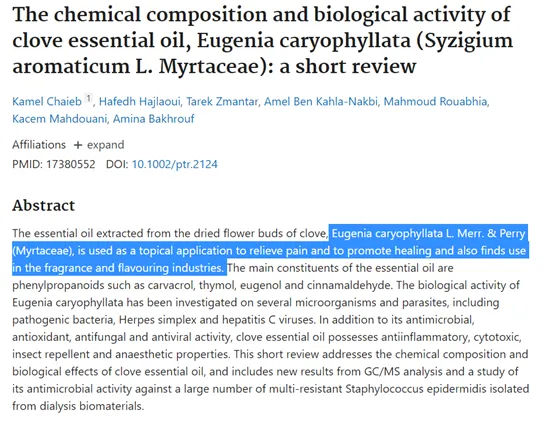
▸ Cloves can relieve pain and help skin wounds to recover, and are also used in spices and condiments.
|Raw Material Certifications
To obtain relevant certification information, please contact us on WhatsApp.
▎Formula Guide

Prevent Oral Problems
20 drops of Clove buds + 4 ml of Brandy (or alcohol), then take 20 ml of water + 5 drops of clove alcohol, mix evenly and use it as a mouthwash to rinse your mouth.
▎Precautions
- Please adjust the ratio of product according to your personal skin condition.
- This product is a raw material and is recommended to be used after dilution.
- Please do a local skin test before applying on the face.
- There is no safety concern when used in normal doses.
▎References
- da Costa JS, da Cruz ENS, Setzer WN, da Silva JKDR, Maia JGS,. Essentials Oils from Brazilian Eugenia and Syzygium Species and Their Biological Activities. Figueiredo PLB.Biomolecules. 2020 Aug 6;10(8):1155.
- Leal Pinto SM, Herrera Sandoval LV, Vargas LY. In vitro susceptibility of Microsporum spp. and mammalian cells to Eugenia caryophyllus essential oil, eugenol and semisynthetic derivatives. Mycoses. 2019 Jan;62(1):41-50.
- Xu J, Liu T, Li Y, Liu W, Ding Z, Ma H, Seeram NP, Mu Y, Huang X, Li L. Jamun (Eugenia jambolana Lam.) Fruit Extract Prevents Obesity by Modulating the Gut Microbiome in High-Fat-Diet-Fed Mice. Mol Nutr Food Res. 2019 May;63(9):e1801307.
- Murina F, Vicariotto F, Di Francesco S. Thymol, eugenol and lactobacilli in a medical device for the treatment of bacterial vaginosis and vulvovaginal candidiasis. New Microbiol. 2018 Jul;41(3):220-224.
- Gucwa K, Milewski S, Dymerski T, Szweda P. Investigation of the Antifungal Activity and Mode of Action of Thymus vulgaris, Citrus limonum, Pelargonium graveolens, Cinnamomum cassia, Ocimum basilicum, and Eugenia caryophyllus Essential Oils. Molecules. 2018 May 8;23(5):1116.
- Sabiha Sharif Salih. Nask Muhammad Faraj. Abdul Mostafa Hamarash. Effect of Plant Extract "Eugenia caryophyllus", "Cinnamon Zeylanicum" on "Antibiotic" Resistant from "Staphylococcus Aureus”. British Journal of Pharmacology and Toxicology , 5卷4期 (2014 / 08 / 20) , P125 – 128.
- Han X, Parker TL. Anti-inflammatory activity of clove (Eugenia caryophyllata) essential oil in human dermal fibroblasts. Pharm Biol. 2017 Dec;55(1):1619-1622.
- da Silva MMM, da Silva EP, da Silva FA, Ogando FIB, de Aguiar CL, Damiani C. Physiological development of cagaita (Eugenia dysenterica). Food Chem. 2017 Feb 15;217:74-80.
- Maryam Azizkhani et al. Comparative efficacy of Zataria multiflora Boiss., Origanum compactum and Eugenia caryophyllus essential oils against E. coli O157:H7, feline calicivirus and endogenous microbiota in commercial baby-leaf salads. International Journal of Food Microbiology, Volume 166, Issue 2 September 2013, Pages 249-255.
- Chaieb K, Hajlaoui H, Zmantar T, Kahla-Nakbi AB, Rouabhia M, Mahdouani K, Bakhrouf A. The chemical composition and biological activity of clove essential oil, Eugenia caryophyllata (Syzigium aromaticum L. Myrtaceae): a short review. Phytother Res. 2007 Jun;21(6):501-6.
- Tragoolpua Y, Jatisatienr A. Anti-herpes simplex virus activities of Eugenia caryophyllus (Spreng.) Bullock & S. G. Harrison and essential oil, eugenol. Phytother Res. 2007 Dec;21(12):1153-8.
|Some images sourced from the internet. Contact for copyright removal|
